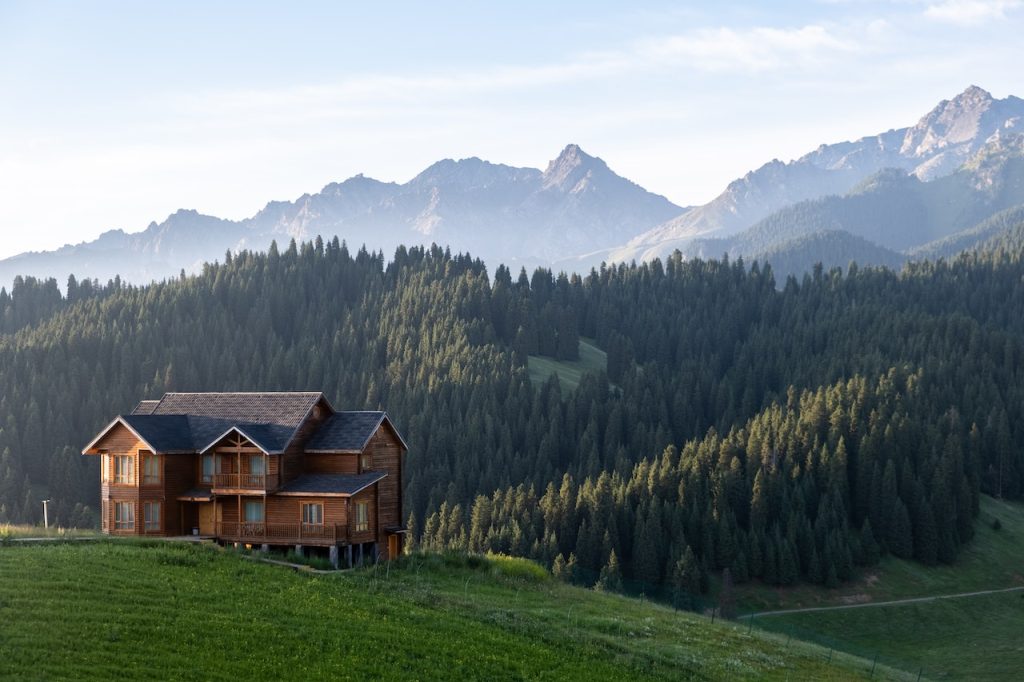# Embracing the Off-Grid Lifestyle: A Journey into Sustainable Farming and Gardening
A few years back, I found myself staring out at a world of endless potential beyond my back porch. The sun was just kissing the horizon, casting a warm golden hue over my tiny patch of earth. With each passing day, I realized that the land was not just soil; it was a canvas waiting for my touch—a chance to cultivate not only crops, but also a life deeply connected to nature. That initial spark of inspiration transformed into a passion for sustainable farming and gardening, paving the way for a lifestyle that nourishes both body and soul.
## The Allure of Sustainable Farming
Sustainable farming is much more than a method; it’s a philosophy rooted in balance and harmony with the environment. By mimicking nature’s processes, we can cultivate crops that not only thrive but enrich the soil. The allure lies in its promise of cooperation with nature rather than competition against it. Imagine planting seeds that will give back to the earth while providing healthy food for your family—all while reducing your carbon footprint.
### Why Choose Sustainable Farming?
1. **Healthier Soils**: Conventional farming often depletes nutrients, but sustainable practices, such as crop rotation and cover cropping, reinvigorate the land.
2. **Biodiversity**: Encourages a wide variety of plant and animal life, which leads to a more resilient ecosystem.
3. **Resilience Against Climate Change**: Sustainable methods help mitigate the impacts of extreme weather by enhancing soil structure and moisture retention.
4. **Community Engagement**: Operating within a local food network fosters community relationships and revives traditional farming techniques.
## Starting Your Own Sustainable Garden
If you’re captivated by the idea of farming sustainably, starting your own garden is the most approachable first step. Here’s how to make it a vibrant success:
### 1. **Choose the Right Location**
Select a spot that receives ample sunlight and has good drainage. Survey the space for wind exposure and shade from trees or buildings. If you’re in a cooler climate, consider a spot that will maximize sunlight.
### 2. **Know Your Soil**
Conduct a simple soil test to understand its pH and nutrient composition. This information can guide your amendments, ensuring your plants receive the proper nutrition to flourish.
### 3. **Plan Your Garden Layout**
Utilize companion planting for maximizing space and pest control. For instance, planting tomatoes alongside basil not only saves space but can enhance each plant’s growth.
### 4. **Select Native and Heirloom Seeds**
Opting for native plants means they’re adapted to the local climate. Heirloom varieties often have better flavors and are more resilient, plus they contribute to biodiversity.
### 5. **Utilize Organic Practices**
Focus on organic methods such as composting, natural pest management, and crop rotation. These practices not only prevent harmful effects on the environment but also improve soil health.
### 6. **Practice Water Conservation**
Consider using rain barrels or drip irrigation systems to gather and distribute water efficiently. This not only conserves water but lowers your utility costs.
## The Joy of Permaculture
At the heart of sustainable farming is the practice of permaculture. This holistic approach mimics natural ecosystems to create a self-sustaining environment. Its design principles can turn any space, no matter how small, into a productive wonderland.
### Key Principles of Permaculture
1. **Observe and Interact**: Take the time to understand the existing ecosystems in your garden or land.
2. **Catch and Store Energy**: Utilize renewable resources, such as solar panels or rainwater harvesting systems, to create self-sufficient energy sources.
3. **Use and Value Renewable Resources**: Incorporate materials such as bamboo or recycled tires for garden structures.
4. **Produce No Waste**: Composting and recycling organic materials can create a closed-loop system that nourishes your garden.
### A Beginner’s Permaculture Design
1. **Zoning**: Place high-maintenance crops close to your house (like herbs or salad greens) for easy access. Reserve the outer zones for trees or perennial crops that require less attention.
2. **Water Management**: Implement swales (shallow channels) to manage rainwater runoff and direct it to your plants.
3. **Vertical Gardening**: Utilize trellises and vertical structures to maximize your planting area and enhance air circulation around your crops.
## DIY Gardening Projects
To make your sustainable garden even more enjoyable, consider some DIY projects that elevate your gardening experience.
### 1. **Compost Bin**
Building a compost bin is easier than it sounds! Find a quiet corner of your yard, use reclaimed wood, and assemble a simple three-sided structure. Layer organic waste, browns like dried leaves, and greens like kitchen scraps to create nutrient-rich compost.
### 2. **Rain Garden**
Picture a vibrant mini-ecosystem that collects rainwater runoff while thriving with native plants. Dig a shallow basin, fill it with well-draining soil, and plant local flora that flourishes in wet conditions. This not only helps the environment but also adds a splash of color to your yard!
### 3. **Herb Spiral**
Build a spiral garden for growing herbs that need varying amounts of sun and water. By creating levels, you can maximize space while ensuring your plants thrive in their preferred conditions.
## Pro Tips for a Thriving Off-Grid Garden
To ensure your sustainable garden flourishes, here are some actionable pro tips:
1. **Start Small**: Don’t overwhelm yourself; begin with a small area and gradually expand as you gain confidence and experience.
2. **Connect with Nature**: Spend time simply observing your garden. This will teach you about pest behaviors and plant interactions.
3. **Join a Local Gardening Group**: Community support can provide invaluable knowledge, inspiration, and encouragement.
4. **Keep a Garden Journal**: Document your successes and setbacks, as this will help you refine your practices year after year.
5. **Stay Flexible**: Nature is unpredictable; don’t be afraid to change your plans as you learn. Sometimes the best ideas come from observation and experimentation!
## The Bigger Picture: Food Security and Community
Embracing an off-grid lifestyle through sustainable farming does more than just benefit your household. It has far-reaching implications for community food security. By growing your own food and supporting local farmers, you contribute to a resilient community that can better withstand economic fluctuations.
### In Closing
The experience of digging into the earth, feeling the seasons change, and growing your food is nothing short of transformative. Sustainable farming and gardening offer not just the promise of food on your table, but a sense of purpose and belonging to the cycle of life. With a bit of creativity, some hard work, and a belief in the power of nature, anyone can cultivate their own patch of paradise—one seed at a time.
Whether it’s your small balcony or a sprawling piece of land, every effort counts. Dive in, have fun, and embrace the adventure of living off the grid sustainably! Your future self will thank you—not just for the fresh produce, but for the deeper connection to the world around you.



